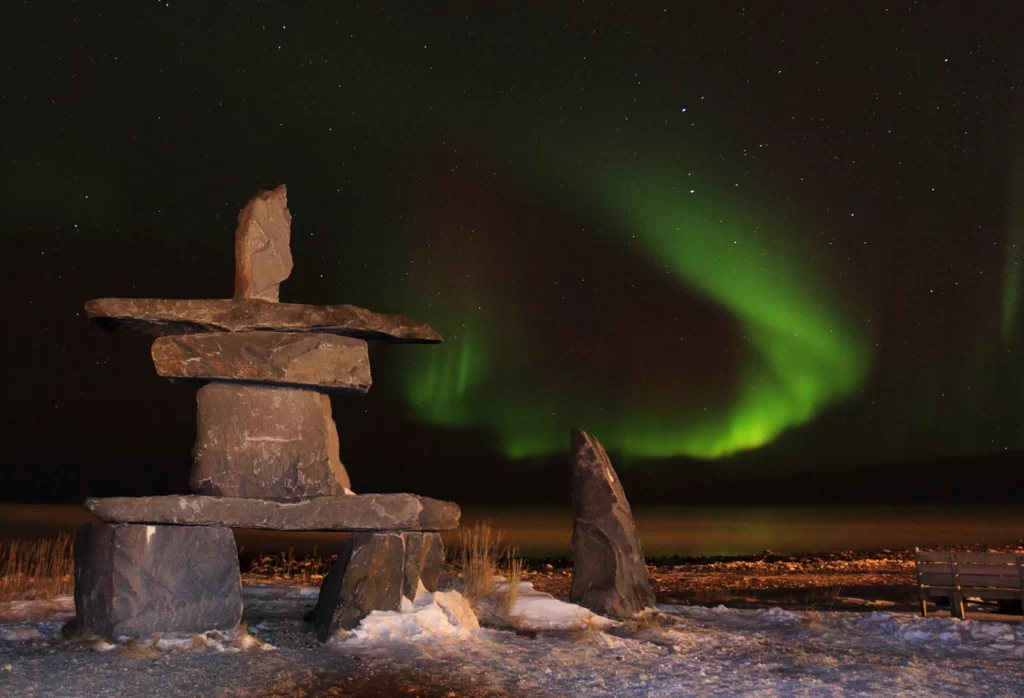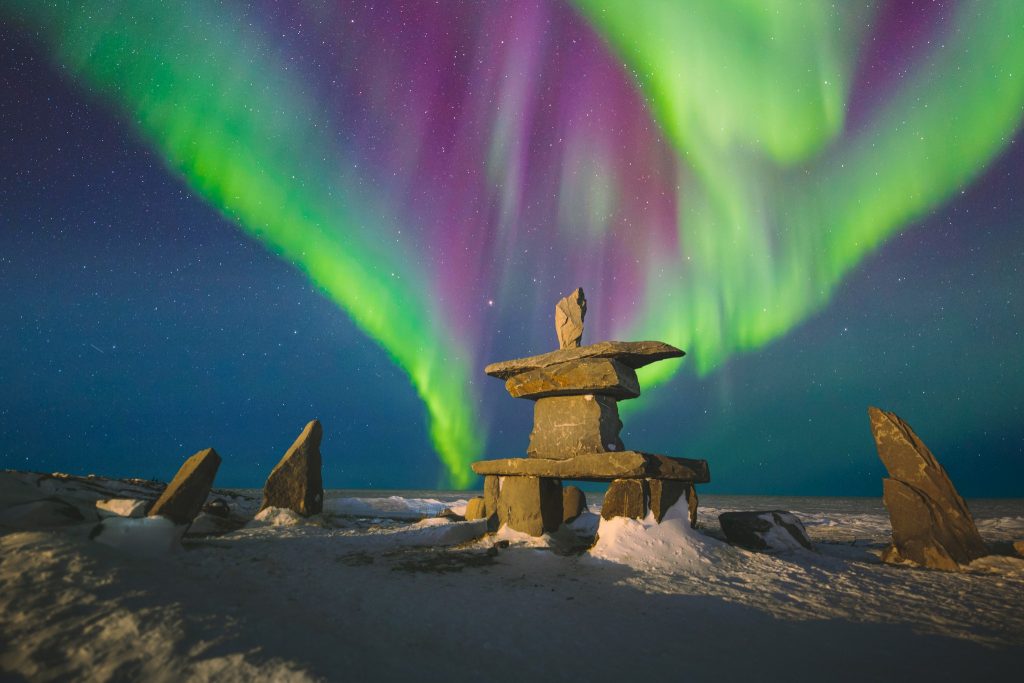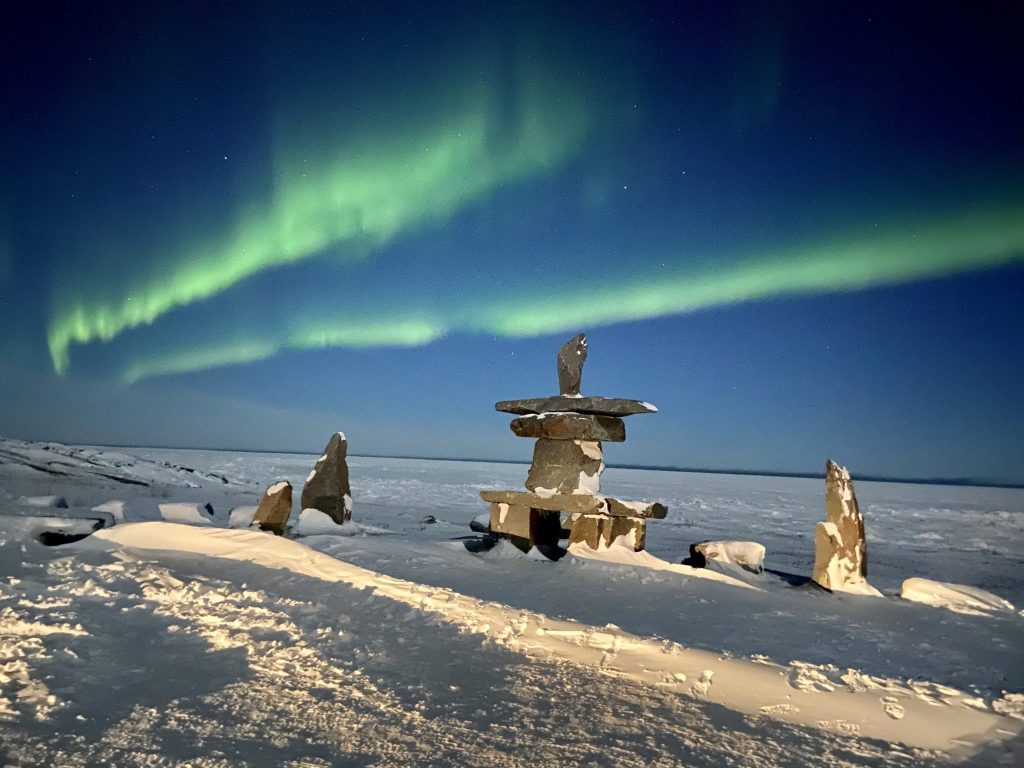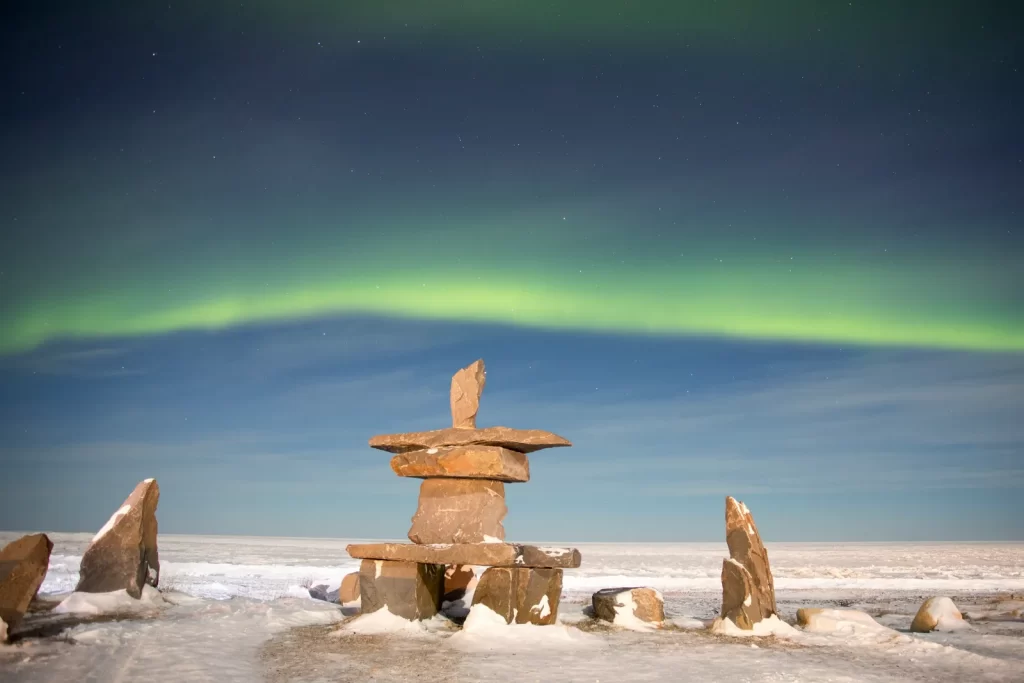Landscapes and Memories – Inuksuit


An inukshuk is a marker with great historical heritage, appropriated into a fad amongst amateur hikers and tourists. I often see them in the United States on trails, or in locations where there is a large quarry of flat rocks along popular routes. I have even seen them as part of an installation in someone’s front garden. While part of myself is elated that this tradition has taken on a new significant meaning to today’s populace, another is annoyed. The part that is annoyed is knowing there is a possible ignorance of this tradition by those appropriating the practices of the Inuit.



I came across this cairn or inukshuk on a ledge of Cathedral Rock, Sedona, AZ. This inukshuk is a perfect example of appropriation. It obviously marks a view point, and indicates a significant drop on the other side of the pile, which is true to an inukshuk’s original purpose. This specific inukshuk was erected because it indicated an ‘energy line or vortex’ that ran through the site. The fact that the inukshuk was created in Arizona, for neo-spiritualistic beliefs as opposed to Inuit religion that encompasses animism and shamanism, and not by an Inuit individual all denote cultural appropriation.
Inuksuit, the origins
The Inuit are a nomadic people, travelling from Canada to Greenland when ice sheets form. They are traditionally seasonal hunters and gathers, though much of this way of life has been disrupted due to government assimilation programs and legislation restrictions (Irniq 2004: 19). Irniq describes his own experiences with assimilation, being kidnapped by a Catholic priest in front of his parents in the 1950s and sent to a boarding school for assimilation into Canadian culture in his book A Will to Survive. He also discusses the traditions he relearned to be proud of, along with their significance and meaning, such as inuksuit






Their purpose
As Fletcher (2009) states, inuksuit are an integral part of the Inuit peoples, tying culture to landscape. Inuksuit take on several forms, from simple to complex rock pillars, to human figurines. But their primary purpose is that they are meant to be seen. Each inukshuk is meant to delineate that an Inuit had been there and further told of wild game, fishing, spiritual locations and settlements that were close by (Stewart et al 2004: 198).
To build an inukshuk, specific stones and order of construction must be followed to convey a specific message (Dogterom 2007). For example, if the formation resembled a person, the direction the person would be angled at provided directions amongst other meanings associated with its creation. In fact inukshuk can literally translate to mean “which acts in the capacity of a human” (Heyes 2002). However, the spelling of the word changes slightly around the Arctic according to Heyes.
Different inuksuit have special names based on their placement, purpose, and tribe. Inriq (2004: 24) uses the example of the ‘Sakamaktat’ or ‘Sakamaksimajut’ which are used by the Nattilik tribes to indicate a hunting camp for semi-permanent groups. These structures were meant to place meat (fresh or dried), harnesses, and other equipment on top of and out of reach from the wildlife.
Inuksuit are also used to name places – for instance, ancient hunting grounds, episodic settlements, and important trails. But most importantly, as Inriq states, ‘Inuksuit tell a history about where Inuit have been’ (2004: 25). He warns though, it is important to never knock down an inukshuk, because once someone does, their death might come sooner, and therefore must be treated with respect.
Conclusion
Many other cultures of the tundra region have similar practices of stacking stones (eg. Iceland, Finland, Russia). While their purpose is similar – to mark a boundary, a view point, etc. – their folklore, meaning, and formation of the stones differ (Mizin 2013).
While I recognise that the Inuit encourage this tradition to continue on in the face of urban and global migration – I also recognise that there is still a severe misunderstanding of the tradition to an individual who has not been taught by an Inuit person or has not studied their culture.
We must respect the origins of these traditions, and if utilising these structures, use them according to their original intended purpose. Additionally, we must understand that these are ancient structures, imbued in ancient traditions. The stories and meanings that are shared with outside groups are a privilege given by that culture, we are not entitled to them. Likewise, we must continue in conserving and protecting these structures because of their historical, socio-cultural and mnemonic values.

